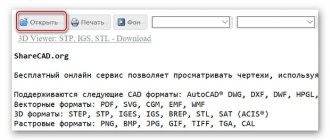Pivot table
| Program name | Automatic JavaScript activation | Manual JavaScript activation |
| Yandex browser | In the latest version | + |
| Internet Explorer | No | + |
| Google Chrome | No | + |
| Mozilla Firefox | Version 23 and higher | Version 22 and below |
| Opera | No | + |
| Safari | No | + |
back to menu ↑
Java Utility Features
- automatic update mechanism to the latest version from the official website;
- memory management;
- direct access to web services;
- setting up proxy servers;
- creating multi-threaded applications;
- increased security and availability of encryption protocols;
- simple tools for creating network software;
- Efficient interaction with OpenGL and DirectX via Swing.
You can download the latest version of Java for free for Windows 7 64 bit using the link below on the website programmi-skachat.ru. A 32-bit version is also available. The entire installation process takes place in a few minutes. After installing the application, you must restart your computer.
| Latest Java Version: | 8 - 251 from 05/06/2020 |
| Developer: | Oracle |
| Windows version: | windows 10, 8, 7, XP |
| Language: | English and others |
| License: | Free |
| Downloaded: | 92640times |
| Rate the program: | 4.5 out of 5 — ratings 2042 |
| Screenshot of the program: |
File size: 61.4mb
Java program download window from 05/06/2020.
What is javascript?
What is JavaScript
JavaScript can be called a multi-paradigm language. It has support for many programming methods. For example, object-oriented, functional and imperative.
This type of programming is not directly related to java. The main syntax of this programming language is the C language, as well as C++.
The basis of browser web pages is HTML code, with which programmers add various interactive elements to the pages.
If javascript is disabled in the browser, interactive elements will not work.
This type of programming language appeared thanks to the joint work of Sun Microsystems and Netscape.
Initially, JavaScript was called LiveScript, but after the Java language became popular among programmers, development companies decided to rename it.
Netscape's marketing department believed that such a name would increase the popularity of the new programming language, which, in fact, happened.
Let us remind you that JavaScript is not directly related to Java. These are completely different languages.
back to menu ↑
Why should you learn JavaScript?
JavaScript is one of the 3 web developer languages
Web developers need to know:
1. HTML to define the content of web pages
2. CSS for web page layout markup
3. JavaScript to program web page behavior
The JavaScript tutorial works with HTML and CSS.
What did you think?
JavaScript and Java are completely different languages, both in concept and design.
JavaScript was invented by Brendan Eich in 1995 and became an ECMA standard in 1997. ECMA-262 is the official name of the standard. ECMAScript is the official name of the language.
You can read more about the different versions of JavaScript in this chapter JS Versions.
JavaScript Features
This programming language has an unlimited number of possibilities due to its versatility.
The main aspects of application are mobile applications for smartphones, interactive web pages of sites and services.
Most of the innovation was brought about by the AJAX company joining the project, which provided the features used in the language today.
To save traffic and increase ease of use, JavaScript provides the ability to change pages of sites and services in small parts, unnoticed by the user online.
This does not require turning off the site while editing or adding new information.
Changes happen immediately, without requiring a page refresh or reload.
The JavaScript feature may be disabled for various reasons.
It is possible that the previous user may have intentionally disabled it since it was not required for web browsing. The shutdown could also happen on its own.
Disabling javascript may prevent some links from opening. Below we will look at ways to enable this function in popular browsers.
back to menu ↑
Basic Features of JavaScript
JavaScript is a language that has the following features:
- High level. It gives the programmer abstractions that make it possible to ignore the specifics of the hardware on which JavaScript programs are executed. The language automatically manages memory using a garbage collector. As a result, the developer can focus on solving the problems facing him without being distracted by low-level mechanisms (although, it should be noted, this does not eliminate the need for rational use of memory). The language offers powerful and convenient tools for working with various types of data.
- Dynamic. Unlike static programming languages, dynamic languages are able, during program execution, to perform actions that static languages perform during program compilation. This approach has its pros and cons, but it gives the developer such powerful features as dynamic typing, late binding, reflection, functional programming, changing objects at runtime, closures, and much more.
- Dynamically typed. Variable types are not required to be specified during JS development. In the same variable, for example, you can first write a string and then an integer.
- Weakly typed. Unlike strongly typed languages, weakly typed languages do not force the programmer, for example, to use objects of certain types in certain situations, performing implicit type conversions if necessary. This gives more flexibility, but JS programs are not type safe, which makes type checking more difficult (TypeScript and Flow are aimed at solving this problem).
- Interpretable. It is widely believed that JavaScript is an interpreted programming language, which means that programs written in it do not need to be compiled before execution. In this regard, JS is contrasted with languages such as C, Java, Go. In practice, browsers, to improve program performance, compile JS code before executing it. This step, however, is transparent to the programmer and does not require additional effort from him.
- Multi-paradigm. JavaScript does not force the developer to use any particular programming paradigm, unlike, for example, Java (object-oriented programming) or C (imperative programming). You can write JS programs using the object-oriented paradigm, in particular, using prototypes and classes that appeared in the ES6 standard. JS programs can also be written in a functional style, due to the fact that functions here are first-class objects. JavaScript also allows working in the imperative style used in C.
Yes, by the way, it should be noted that JavaScript and Java have nothing in common. These are completely different languages.
Yandex browser
To enable JavaScript in Yandex Browser, you need to go to settings.
To do this, open the context menu in the upper right corner by clicking LMB on the “three horizontal stripes” , and then select “Settings” .
Yandex Browser settings
Next, using the scroller (mouse wheel), we go down to the very bottom of the page and find the item “Show additional settings” and open it.
Additional Yandex Browser settings
After this, you need to find the “Personal Data” , in which we click the “Content Settings” .
How to enable javascript in Yandex Browser
In the “Javascript” section, check the “Allow Javascript on all sites” and save the changes by clicking the “Finish” button.
After this, JavaScript is immediately activated and will allow you to view previously inaccessible web pages and perform manipulations on interactive services.
Activating javascript in Yandex Browser
After activating the function, the browser itself does not require restarting; you just need to refresh the page by pressing the F5 key or the corresponding icon on the left of the address bar.
In the latest version of the browser, JavaScript activation is installed automatically, so there is no option to enable the function in the settings.
back to menu ↑
Results
- JavaScript can be added to an HTML document using an element in two ways: Define an inline script that sits directly between a pair of and tags.
- Connect an external file with JavaScript code via .
Internet Explorer
In the Internet Explorer browser, you also need to open the settings in order to activate the JavaScript function.
To go to the desired section, click the button indicated by the gear, and then select the item “Browser Options” .
In the window that opens, select the “Security” tab, in which we click LMB on the “Internet” , then click the “Other...” .
Internet Explorer Settings
To disable javascript, follow the following steps:
- Scripts.
- Active scenarios.
- Execute Java application scripts.
- Disable.
Activating and deactivating javascript in Internet Explorer
To activate the function in the sub-item “Run Java application scripts” , check the box “Enable” .
To save the changes, click the “Ok” button, after which in the browser properties window you need to click the “Apply” and restart Internet Explorer.
The next time you launch, the changes will take effect and the function will work properly, providing access to previously inaccessible pages that required JavaScript activation.
back to menu ↑
Google Chrome
Just like in all browsers, to activate JavaScript you need to go to settings.
In Google Chrome, you can open settings by clicking on the function button in the upper right corner of the window.
It is indicated by three horizontal stripes.
In the context menu, select “Settings” .
Google Chrome Settings
After that, using the scroller (mouse wheel), go to the very end of the page and select the item “Show additional settings” .
Google Chrome Advanced Settings
When you expand additional settings, the number of available items will increase significantly. Scroll down the page and find the item “Personal data” , in which we select the button “Content settings” .
Activating javascript in Google Chrome
In the “Javascript” , to activate or deactivate the function, select the appropriate item, and then click the “Finish” button.
Saved changes take effect immediately.
There is no need to restart the browser, you just need to refresh the page by pressing the F5 key or the corresponding icon on the left in the address bar.
Activating javascript in Google Chrome
After activating the JavaScript function, you will be able to view previously inaccessible web pages, as well as perform various actions on interactive services.
back to menu ↑
Mozilla Firefox
With the Mozilla Firefox browser, things with JavaScript activation are somewhat different.
It all depends on the version of your browser.
Versions from 23 and higher do not require manual activation of javascript; this function is activated automatically and works completely properly.
You can check your browser version using this link:
To activate the JavaScript function in version 22 and lower, go to the toolbar and select the menu item "Settings" .
Mozilla Firefox Settings Menu
To enable javascript, go to the “Content” , in which to activate the function you need to check the box “Use JavaScript” .
To disable the function, you need to uncheck this box.
Activating and deactivating JavaScript in Mozilla Firefox
To save the changes, click the “OK” button and refresh the browser page.
You do not need to restart the browser for the changes to take effect. After activation, you will be able to fully view web pages and perform actions on interactive services.
back to menu ↑
IDEs and code editors
- WebStorm is a powerful IDE for advanced web application development in JavaScript. It offers support for various frameworks and markup languages. WebStorm can be easily integrated with additional tools like testers, code quality checkers, builders, etc. The IDE also comes with built-in features like automatic code completion, immediate error detection, navigation, built-in terminal, rich set of plugins, and much more.
- Atom is a free product from GitHub and the #1 choice for many developers. It is a highly customizable code editor that comes with some cool features right out of the box. Atom has a built-in package manager, intelligent code completion, and other useful features. Atom is also a cross-platform code editor.
- Visual Studio Code is supported by Microsoft and fully supports TypeScript right out of the box. Visual Studio Code features intelligent code completion and syntax highlighting with IntelliSense, a built-in debugging tool, native support for Git commands, version control, and more. Moreover, you can expand the functionality of the editor by connecting a wide range of extensions.
- Brackets is a lightweight open source code editor. It mainly focuses on visual tools and CPU support to make the browser experience easier. Brackets comes with a convenient live preview feature.
Opera
The situation with the Opera browser is almost the same as with Mozilla Firefox.
The only difference is that the function is not automatically activated in either version.
Activation of JavaScript occurs differently in different versions.
In order to enable the function, you first need to find out the version of your browser using the link:
back to menu ↑
Versions from 10.5 to 14
First of all, we need to open the browser settings.
In the upper left corner, click the “Menu” , in the context menu, move the cursor to the “Settings” and click on the “General settings...” .
Settings in Opera versions from 10.5 to 14
After this, a new window with browser settings will open.
In it you need to select the “Advanced” .
In the left menu of the tab, click on the item “Content” , after which we activate the function by checking two checkboxes on the items “Enable JavaScript” and “Enable Java” .
To deactivate, these checkboxes must be unchecked.
Activation and deactivation of javascript in Opera versions from 10.5 to 14
After you have checked or unchecked the boxes, save the changes by clicking the “OK” button.
Now we restart the browser for the changes to take effect. All javascript functions will be available to you.
back to menu ↑
Versions from 15 and higher
In these versions of the Opera browser, activation of JavaScript is much simpler.
In order to open the settings window, you need to press the Alt+P hotkey combination in an open browser. In the menu that opens, open the “Sites” .
To activate the function, you need to set the checkbox to “Allow JavaScript execution” , to deactivate it – “Prohibit JavaScript execution” .
Activating and deactivating javascript in Opera version 15 and higher
After this, just click the “OK” button to save the changes and refresh the page you are viewing with the F5 key or by clicking the corresponding icon on the left of the address bar.
There is no need to restart the browser.
back to menu ↑
Safari
To enable the JavaScript function in Apple's proprietary browser, Safari, you need to go to settings.
To open them, you need to click the “Safari” and select “Settings ”.
Open Settings in Safari
In the window that opens, go to the “ Security” , where in the “Web Content” “Enable JavaScript” box .
Accordingly, to deactivate JavaScript, this checkbox must be unchecked.
After this, save the changes by clicking the “OK” button and refresh the open page in the browser.
There is no need to restart the browser; the changes take effect immediately after saving.
back to menu ↑
Microsoft Edge
You can activate javascript not only in the browser, but also in the operating system itself. “Run” functional window using the Win+R hotkey combination.
In the appropriate line you need to enter the command “gpedit.msc” (without quotes) and press the Enter button.
Entering a command in the Run window.
Next, in the left menu list, select the “Computer Configuration” and open it by double-clicking LMB.
Computer system command group policy editor
After that, on the right side of the screen, go to the following folders: Administrative Templates → Windows Components → Microsoft Edge .
In the last folder, open the file “Allows you to run scripts, such as JavaScript” .
In the window that opens, select “Enable” or “Disable” to activate or deactivate the function, respectively.
Activating and deactivating javascript on a computer system
After you have activated/deactivated the JavaScript function, save the changes by clicking the “Apply” button.
back to menu ↑
Understanding JavaScript
JavaScript is one of the most popular programming languages in the world.
Created more than 20 years ago, it has come a long way in its development. JavaScript was intended to be a scripting language for browsers. At the very beginning, he had much more modest capabilities than now. It was mainly used to create simple animations, such as drop-down menus, and was known as part of Dynamic HTML technology (DHTML, dynamic HTML). Over time, the needs of the web environment grew, in particular, new APIs appeared, and JavaScript needed to keep up with other technologies to support web development.
These days, JS is used not only in traditional browsers, but also beyond them. In particular, we are talking about the Node.js server platform, the possibilities for using JavaScript in the development of embedded and mobile applications, and solving a wide range of problems for which JavaScript has not been used before.











